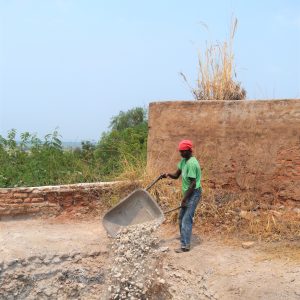Date: April 2018 – July 2018
Raw Materials: 3Ts and gold
Location: International; case studies in Colombia, the DRC and Rwanda
Challenge
The European Partnership for Responsible Minerals (EPRM) is a multi-stakeholder partnership established to create better social and economic conditions for mine workers and local mining communities by increasing the number of mines that adopt responsible mining practices in Conflict and High-Risk Areas (CAHRAs). The EPRM is an accompanying measure to the EU Conflict Minerals Regulation. Focusing on tin, tantalum, tungsten and gold (3TG), and with a global scope, the EPRM supports activities to improve responsible mining practices in CAHRAs.
The EPRM is pursuing its ambitious mission through a range of activities including knowledge sharing among supply chain actors and projects in mineral-producing countries. The EPRM Secretariat and its funders place great importance on being able to monitor and assess the progress and eventual impact of all of the EPRM’s activities. A meaningful baseline is an essential element for any future assessment.
Solution
The EPRM’s multi-stakeholder structure and open remit are important strengths, but they also make it harder to achieve shared definitions of progress and success. Extensive discussions with ERPM members, funders and beneficiaries concluded that the EPRM’s existing results framework is unlikely to provide a sufficiently robust basis for keeping track of progress across the organisation’s diverse strands of activities.
Levin Sources – together with our partner LBN Strategies – therefore combined the preparation of the actual baseline with significant revisions to the overall results model for the EPRM. We placed particular emphasis on incorporating the strengths of the tripartite structure, the expected dynamics of the new EU Regulation and the resources available to the Secretariat for ongoing monitoring & evaluation (M&E) into the revised model.
The overriding objective was to arrive at a new results framework that is user-friendly for the EPRM Secretariat and the organisations it funds as well as sufficiently robust and flexible to capture the range of changes the EPRM is aiming to contribute to in ways that easily translate into meaningful reporting to its funders. Three country and two company case studies were also presented to provide a tangible sense of the current situation at upstream, midstream and downstream levels for 3TG supply chains. The revised results framework was presented to the EPRM Secretariat and Board.
Results
The final report set out a results framework with revised output, outcome and impact categories as well as draft indicators for each level. It recommended that the EPRM Secretariat should strengthen its internal capacity for M&E and collaborate with members, beneficiaries and relevant international bodies to achieve an M&E system that works effectively and efficiently. The EPRM Board also has an important role to play by providing guidance and oversight of the M&E function and ensuring that the Secretariat has the resources and support it requires. The mid-term review expected in 2020 will be a first real test of the revised M&E framework.






